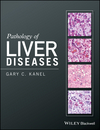Hepatic Tumors, Malignant
Abstract
Hepatocellular carcinoma is the most common primary hepatic neoplasm worldwide and is well known to be associated with chronic liver disease and especially chronic viral hepatitis. This chapter addresses the malignant hepatic neoplasms with additional emphasis on the various pathophysiologic processes in tumor evolution. Certain tumor growth factors such as insulin-like growth factors (IGF-2) can stimulate the expression of vascular endothelial growth factor (VEGF), which is critical in tumor angiogenesis. Most commonly the tumor cells have round to oval hyperchromatic nuclei, usually prominent nucleoli, and an eosinophilic to granular and sometimes hydropic cytoplasm. Variants of hepatocellular carcinoma include the following: clear cell, pelioid, spindle cell and multinucleated giant cell. Some non-viral liver diseases have a high association with the development of hepatocellular carcinoma, in particular hereditary hemochromatosis and hereditary tyrosinemia. The chapter lists the various immunohistochemical staining patterns that useful in the diagnosis of hepatocellular carcinoma.



